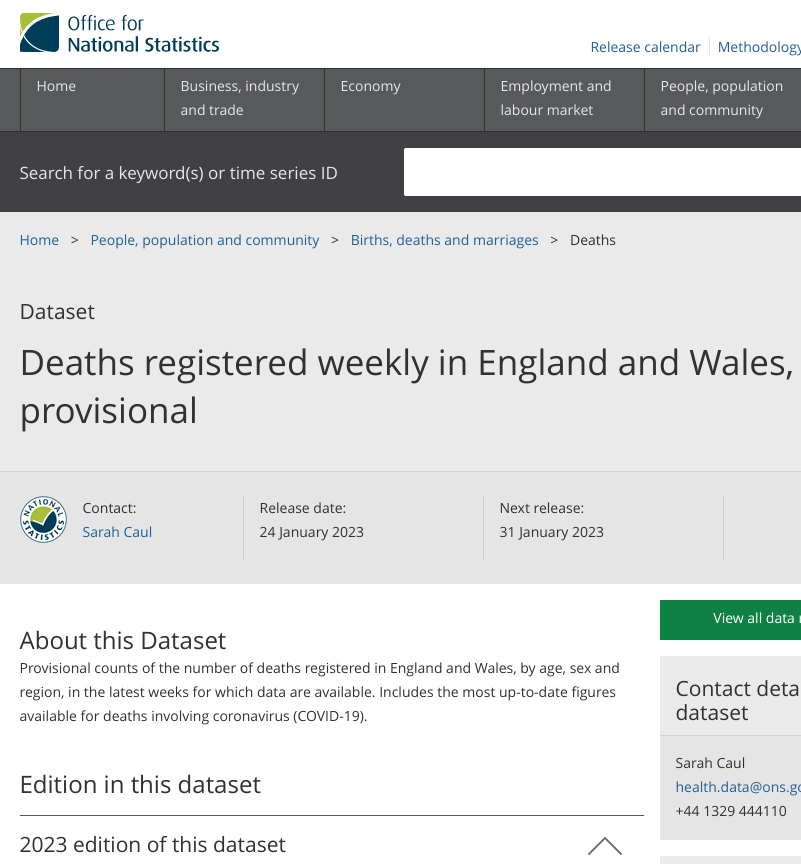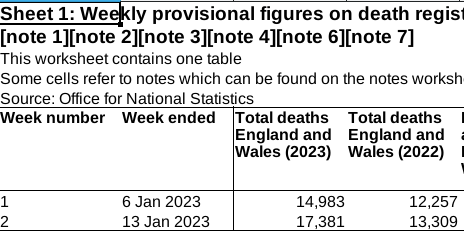Smoking Kills. What Else?
New video:
Description:
US, Weekly Cumulative All-Cause Excess Deaths
https://www.usmortality.com
https://www.usmortality.com/deaths/excess-cumulative/united-states
Excess deaths 2022 (Up to December 1st) 242,224
https://www150.statcan.gc.ca/n1/pub/71-607-x/71-607-x2021028-eng.htm
https://www23.statcan.gc.ca/imdb/p2SV.pl?Function=getSurvey&SDDS=3233
Australian Bureau of Statistics
Provisional Mortality Statistics
Reference period, Jan – Sep 2022
144,650 deaths that occurred by 30 September
19,986 (16.0%) more than the historical average.
Deaths attributed to covid, 8,160
October covid deaths, 232
Australia, September 2022
13,675 deaths (doctor certified)
1,814 were coroner referred.
UK, ONS
https://www.ons.gov.uk/peoplepopulationandcommunity/healthandsocialcare/conditionsanddiseases/articles/coronaviruscovid19latestinsights/infections
UK Prevalence
2.61% in England (1 in 40 people)
3.94% in Wales (1 in 25 people)
4.22% in Northern Ireland (1 in 25 people)
3.26% in Scotland (1 in 30 people)
Deaths and excess deaths (W/E week 13th January 2023)
A total of 19,916 deaths were registered in the UK
20.4% above the five-year average.
Covid UK deaths
1,059 deaths involving COVID-19 registered
(up 842 on the week)
Deaths involving COVID-19 accounted for 5.3% of all deaths
UK, Office for Health Improvement
https://www.gov.uk/government/statistics/excess-mortality-in-england-and-english-regions
Excess deaths in all age groups, (0 to 24 years)
UK, Institute and Faculty of Actuarieshttps://actuaries.org.uk/news-and-media-releases/news-articles/2023/jan/17-january-23-cmi-says-2022-had-the-worst-second-half-for-mortality-since-2010/
Mortality rates in 2022 compare to 2019 at different ages
2022, mortality, 7.8% higher for ages 20-44
In the UK, the second half of 2022
26,300 excess deaths,
compared to 4,700 in the first half of 2022
Europe, EuroMOMO, Bulletin week 2 2023
https://www.euromomo.eu
Pooled EuroMOMO, all-cause mortalit
Elevated level of excess mortality,
overall and in all age groups.
Data from 25 European countries or subnational regions
Average levels from pre 2020
https://www.health.govt.nz/nz-health-statistics/health-statistics-and-data-sets/mortality-data-and-stats
https://www.stats.govt.nz/topics/births-and-deaths
Year ended September 2021, total of 34,578 deaths
Year ended September 2022, total of 38,052 deaths






 Filed under:
Filed under:  his is the latest (still ongoing):
his is the latest (still ongoing):

 arlier today I
arlier today I 


 MAGINE the media not talking about this….
MAGINE the media not talking about this….
 ver a month ago
ver a month ago